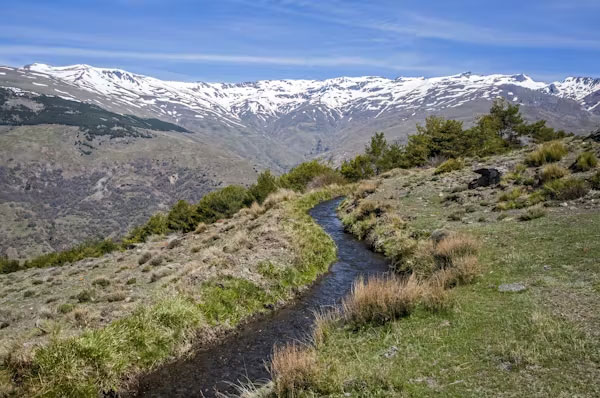Lessons from ancient farmers in adapting to climate change
Through archaeological discoveries around the world, scientists have found that ancient farming methods helped civilizations overcome difficult times caused by unpredictable climate impacts.
Zuni farmers in the American Southwest overcame a period of rain scarcity from 1200 to 1400 AD by adopting small-scale, decentralized irrigation systems. Ghanaian farmers responded to severe drought from 1450 to 1650 by growing native African grains, such as drought-resistant pearl millet.

The ancient form of Moorish irrigation was revived in Spain. (Photo: Getty Images).
These ancient methods are attracting much attention today, as countries face unprecedented heat waves, storms and floods. News website The Conversation said some farmers and international development organizations are looking deeper to revive these ancient methods.
Drought-stricken farmers in Spain have revived medieval Moorish irrigation technology . Ranchers in Texas (USA) have turned to the ancient method of cover crops to combat unpredictable weather patterns. Cover crops have the main role of reducing erosion, improving soil, suppressing weeds, supporting pest control.
In the tropical lowlands of Mexico and Central America, indigenous Maya farmers have practiced slash-and-burn agriculture for thousands of years. They apply the milpa system of intercropping with indigenous vegetable varieties. In addition, they adapt to drought by gently manipulating the forest ecosystem through controlled burning and careful conservation of open forests.
Several years ago, the Mayan milpa methods began to attract public attention when international organizations collaborated with many famous chefs to promote the concept. But they condemn the practice of burning forests in new areas and instead promote a 'no-burn' version of growing certified organic corn for high-end restaurants.
In Central Mexico, chinampas are ancient systems of artificial islands and canals . They have helped farmers grow food in wetlands for centuries. With chinampa, farmers create a number of narrow islands, with an average width of about 6 to 10 m and about 100 to 200 m long. The lake provides chinampa with moisture and decomposing organic waste to irrigate and fertilize the island's soil, supporting intensive and highly productive farming.
According to the BBC (UK), these small islands formed from layers of vegetation and mud have the ability to absorb water from surrounding channels and maintain humidity for a long time. Besides, the layers of chinampa are designed to facilitate plants to take root and absorb groundwater directly, reducing the need for external irrigation.
Today, the future of chinampa agriculture depends on a handful of fields managed by local farmers on the outskirts of Mexico City. These sectors are now at risk as demand for housing drives informal settlements to encroach on the chinampa area.
- Dak Lak produces coffee adapting to climate change
- Researching rice varieties adapting to climate change
- Ancient Romans were the agents of climate change in Europe 2,000 years ago
- Ancient Egypt collapsed because of climate change
- This is how Dubai copes with climate change
- Climate change changes the evolution of mankind
- What is Climate Change?
- The world's oldest mummy is decomposing due to the effects of climate change
- Smart seeds help farmers overcome climate change
- Climate change from a scientific perspective
- Ancient climate change: palm trees give way to spruce
- Marching for climate change around the world
 Is the magnetic North Pole shift dangerous to humanity?
Is the magnetic North Pole shift dangerous to humanity? Washington legalizes the recycling of human bodies into fertilizer
Washington legalizes the recycling of human bodies into fertilizer Lightning stone - the mysterious guest
Lightning stone - the mysterious guest Stunned by the mysterious sunset, strange appearance
Stunned by the mysterious sunset, strange appearance